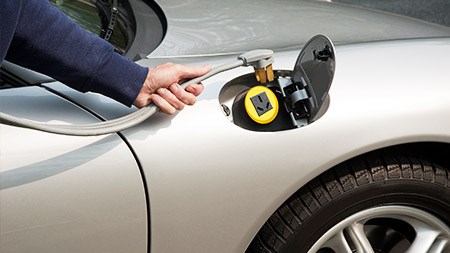Why do we care about carbon emissions?
The global climate crisis has, in part, been brought on by carbon emissions. And, while there are both natural and human sources of these, the more Carbon Dioxide released into the atmosphere, the more our planet experiences negative effects. Thanks to industrialisation, urbanisation, pollution, and environmental devastation, we’re effectively killing the planet with our carbon emissions. In fact, as revealed earlier in 2019, CO2 particles in our atmosphere exceeded 415 parts per million, for the first time in human history.
What is your personal carbon footprint?
Your carbon footprint is the amount of carbon dioxide that’s released into the atmosphere, as a result of your living, working, travelling, lifestyle, and other, habits. We can’t entirely eliminate our personal carbon footprint, but we can reduce just how big our personal impact on our environment is. And here’s the good news: it’s not too difficult to do.
Adapt your office
Making small changes in the way you work can have a big impact on your carbon footprint. Consider it this way: you spend a significant amount of time at work, so adapting your work routine and tasks towards a more eco-friendly approach will have the biggest immediate effect on your carbon footprint. Of course, we all know we should be recycling, repurposing our waste paper, and eliminating paper cups from our kitchens. But, changing your office lighting and using LED light bulbs instead of fluorescent lighting, can significantly decrease your carbon footprint at the office. We’d also suggest you:
Go paperless as much as possible: Use cloud-based services to share documents with your colleagues, and stick to email archiving, rather than physical filing cabinets.
Get rid of big computers: Laptops are the way forward for the energy-efficient, eco-friendly office. Laptops use up to 80 percent less power than typical desktop computers.
Manage your e-waste correctly: Old computers, printers, and machinery, should not be disposed via your usual means. If these items end up in landfills, they can effectively poison the soil, as they seep damaging chemicals into the ground as they degrade. Rather, find out about a proper e-waste service provider in your area, and let them ensure your machinery is properly disposed of.
Cut back on meetings and staff travel: It’s time to stop wasting money (and time) by insisting that everyone needs to be in the same room to meet. Use telecommuting services, online meeting services, and online chat mechanisms to host as many meetings as you possibly can. It’ll save your company money too, especially if team members need to fly in, or drive to the office, to attend meetings.
Change how you travel
Your daily commute is directly linked to your personal carbon footprint. If you’re spending 45 minutes a day on the freeway to get to the office, your carbon footprint will be much larger than someone who works from home. Cutting back on your carbon footprint, by changing the way you travel, doesn’t necessarily mean you need to cut back on how much you travel, but it does mean doing it a little differently. We recommend:
Starting an office carpool movement: If you do live far away from your office, you’re probably not the only one. Start a carpool group, and you’ll be able to cut back not only your monthly petrol bill, but your carbon footprint too.
Change the way you get to work: If possible, opt for using public transport, rather than using your car, to get to and from the office.
Move closer to your office: If you can and if it’s suitably affordable for you to do so, think about moving closer to your office. That’ll cut down on your travel time, petrol bill, and personal carbon footprint. Big tip: you could even start a new exercise routine this way, and walk or ride your bicycle to and from the office each day. That’ll be two birds, one stone, and one big shrink in the size of your personal carbon footprint.
Change your holiday plans: If you take a round trip from Johannesburg to Dubai, on an aeroplane, your travel will be responsible for 0.95 metric tons of carbon emissions. That’s according to this carbon footprint calculator. Let’s think of different ways to enjoy our vacation time, this year!
Swap your shopping habits
Being a little bit more picky about the way you shop can go a long way in reducing your carbon footprint. Supporting fresh produce markets that are supplied by local farmers, for example, effectively cuts down on the carbon emissions associated with getting fresh produce on to your plate. Similarly, what you eat can have an effect on your personal carbon footprint. As a food production process, meat production is responsible for a significant amount of carbon emissions. If you cut back on the amount of meat you and your family eat every week, you’ll be reducing your carbon footprint in a big way.
Read more: Carbon-neutral living
Get planting
You might think what you do in your garden won’t matter, but it does, not only for your immediate environment, but on a global scale too. Simply planting one tree can offset up to 21 kilograms of carbon dioxide, every year. Trees function as the planet’s carbon dioxide disposal mechanism: as a tree absorbs carbon dioxide, it releases oxygen into the air around it.





